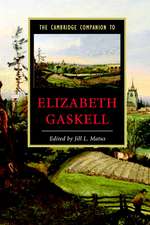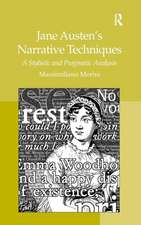Popular Fiction and Brain Science in the Late Nineteenth Century: Cambridge Studies in Nineteenth-Century Literature and Culture, cartea 78
Autor Anne Stilesen Limba Engleză Paperback – 20 aug 2014
| Toate formatele și edițiile | Preț | Express |
|---|---|---|
| Paperback (1) | 284.17 lei 6-8 săpt. | |
| Cambridge University Press – 20 aug 2014 | 284.17 lei 6-8 săpt. | |
| Hardback (1) | 695.93 lei 6-8 săpt. | |
| Cambridge University Press – 21 dec 2011 | 695.93 lei 6-8 săpt. |
Din seria Cambridge Studies in Nineteenth-Century Literature and Culture
-
 Preț: 176.74 lei
Preț: 176.74 lei -
 Preț: 177.52 lei
Preț: 177.52 lei -
 Preț: 236.96 lei
Preț: 236.96 lei -
 Preț: 294.81 lei
Preț: 294.81 lei - 9%
 Preț: 627.22 lei
Preț: 627.22 lei - 19%
 Preț: 608.35 lei
Preț: 608.35 lei -
 Preț: 236.78 lei
Preț: 236.78 lei -
 Preț: 447.30 lei
Preț: 447.30 lei - 8%
 Preț: 530.42 lei
Preț: 530.42 lei - 9%
 Preț: 593.58 lei
Preț: 593.58 lei -
 Preț: 237.41 lei
Preț: 237.41 lei - 9%
 Preț: 627.52 lei
Preț: 627.52 lei -
 Preț: 201.59 lei
Preț: 201.59 lei - 11%
 Preț: 697.89 lei
Preț: 697.89 lei - 11%
 Preț: 580.30 lei
Preț: 580.30 lei -
 Preț: 287.28 lei
Preț: 287.28 lei - 9%
 Preț: 592.33 lei
Preț: 592.33 lei - 11%
 Preț: 641.67 lei
Preț: 641.67 lei - 5%
 Preț: 681.46 lei
Preț: 681.46 lei -
 Preț: 202.74 lei
Preț: 202.74 lei - 11%
 Preț: 642.48 lei
Preț: 642.48 lei - 11%
 Preț: 694.58 lei
Preț: 694.58 lei - 11%
 Preț: 584.77 lei
Preț: 584.77 lei - 11%
 Preț: 582.20 lei
Preț: 582.20 lei -
 Preț: 286.42 lei
Preț: 286.42 lei -
 Preț: 317.11 lei
Preț: 317.11 lei -
 Preț: 283.63 lei
Preț: 283.63 lei -
 Preț: 283.03 lei
Preț: 283.03 lei -
 Preț: 296.72 lei
Preț: 296.72 lei -
 Preț: 353.48 lei
Preț: 353.48 lei -
 Preț: 290.16 lei
Preț: 290.16 lei -
 Preț: 286.69 lei
Preț: 286.69 lei -
 Preț: 282.65 lei
Preț: 282.65 lei -
 Preț: 285.54 lei
Preț: 285.54 lei -
 Preț: 326.39 lei
Preț: 326.39 lei - 11%
 Preț: 697.28 lei
Preț: 697.28 lei
Preț: 284.17 lei
Nou
Puncte Express: 426
Preț estimativ în valută:
54.38€ • 59.05$ • 45.68£
54.38€ • 59.05$ • 45.68£
Carte tipărită la comandă
Livrare economică 22 aprilie-06 mai
Preluare comenzi: 021 569.72.76
Specificații
ISBN-13: 9781107442467
ISBN-10: 110744246X
Pagini: 274
Ilustrații: 6 b/w illus.
Dimensiuni: 152 x 229 x 15 mm
Greutate: 0.37 kg
Editura: Cambridge University Press
Colecția Cambridge University Press
Seria Cambridge Studies in Nineteenth-Century Literature and Culture
Locul publicării:New York, United States
ISBN-10: 110744246X
Pagini: 274
Ilustrații: 6 b/w illus.
Dimensiuni: 152 x 229 x 15 mm
Greutate: 0.37 kg
Editura: Cambridge University Press
Colecția Cambridge University Press
Seria Cambridge Studies in Nineteenth-Century Literature and Culture
Locul publicării:New York, United States
Cuprins
Introduction: cerebral localization and the late Victorian Gothic romance; Part I. Reactionaries: 1. Robert Louis Stevenson's Jekyll and Hyde and the double brain; 2. Bram Stoker's Dracula and cerebral automatism; Part II. Materialists: 3. Photographic memory in the works of Grant Allen; Part III. Visionaries: 4. H. G. Wells and the evolution of the mad scientist; 5. Marie Corelli and the neuron; Epilogue; Looking forward.
Recenzii
"Popular Fiction and Brain Science in the Late Nineteenth Century establishes the genre of the gothic romance as a vital component of Victorian scienti*c culture, indisputably demonstrates the importance of literary products as primary sources for interpreting the history of neurology, and sets an impeccably high standard for scholarship in both literary studies and the history of science, medicine, and technology."
-Stephen Casper, Project Muse
-Stephen Casper, Project Muse
Notă biografică
Descriere
Examines how Gothic romances like Dracula and Dr Jekyll and Mr Hyde expressed fears and visionary possibilities suggested by neurological research.















